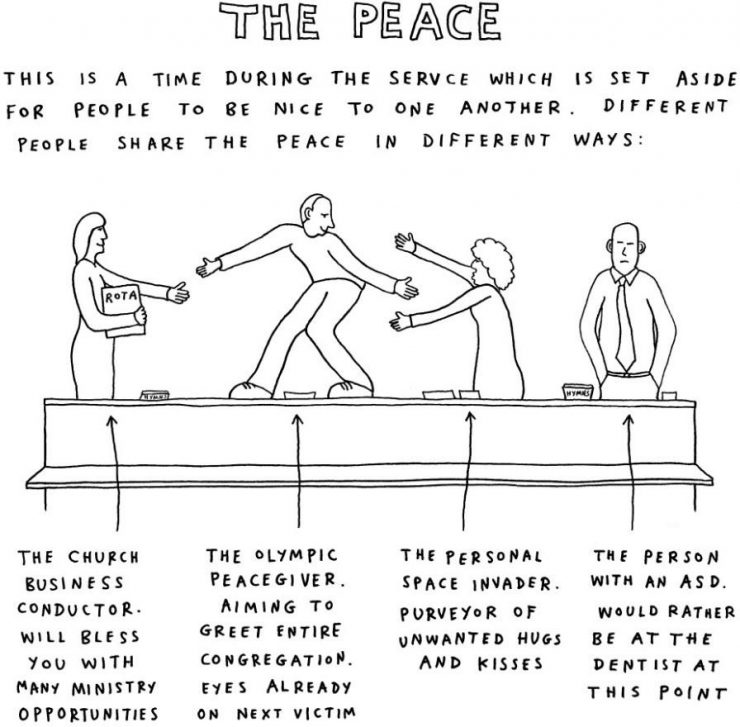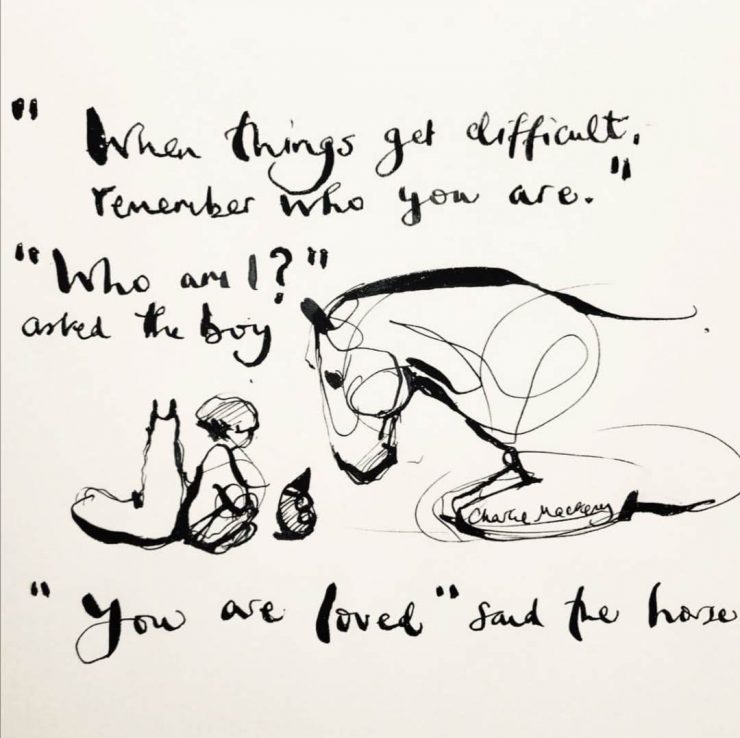Inclusion – isn’t that what Jesus did so well?
By Charlie Macksey from his wonderful book The Boy, The Mole, The Fox and the Horse
Is there a difference between welcoming someone and making someone feel included? And if so, which should come first?
These are questions that Revd Dom Whitting asked himself when putting together the guide, Welcoming All God’s People. As chair of the Equality and Diversity Committee for Truro Diocese, Dom spends a lot of time thinking about the dynamics of welcome and inclusion and, despite our best intentions, how painful it can be when we get it wrong.
“Welcome and inclusion – I think we can either be good at one or the other, and not easily both,” says Revd Dom Whitting
“I think we can either be good at one or the other, and not easily both,” says Dom. “We can make someone feel welcome but how can we include them going forward? Do we ask them to join a rota because we have a space to fill? That might make someone feel included, but not necessarily very welcome.”
There is no pat answer, as each church is different, and each person walking through the door doing so for different reasons. So what are those reasons? To connect with God and others who share their faith? To connect with someone, anyone – are they perhaps lonely? Curious? Seeking something ‘other’ or just like the idea of being part of something in a historic building. Whatever the reasons, the welcome should be the same. Warm, generous and open – accepting people for whoever they are and whatever their reasons, with no judgement or barriers to a holy space and precious time with God.
The epidemic of loneliness
With loneliness epidemic, churches, as community cornerstones, are ideally placed to combat the problem. Age UK estimate that over 1.4 million of over 75s are chronically lonely, yet, ironically it is the young in plain sight who are more likely to describe themselves as ‘always or often lonely’. In a society literally buzzing with ways to connect, too many are disconnected. Revd Liz Adekunle, Archdeacon of Hackney, said recently on Radio 4’s Thought for the Day, “Over a third of young people feel they don’t have anyone who believes in them.” How can the church respond? If we don’t believe in them, how can we expect them to believe in a God who loves them?
How can we make people feel welcome and included, especially if they might be different from the typical demographic? How do we make people feel welcome who are of a different age or ethnicity, level of income, different health or disability situation, a neurodiversity, gender or sexual orientation? What if they cannot read the social cues we all take for granted? How do we respond when someone doesn’t respond in a way that isn’t considered acceptable? Or cannot easily access the building, the pews, the hymn sheets, the liturgy, the traditions or the particular way of doing things that everyone else wants to preserve.

A wonderful illustration by Dave Walker from Welcoming & Including Autistic People in our Churches & Communities
Churches grow – not because there is a ramp but because there is love
As Ann Memmott, member of the planning team for the Inclusive Church/St Martin in the Fields Conference on Disability and Church, says, churches grow because of knowledge, good training and ongoing planning, “Not because there is a ramp, but because there is love.”
When putting together ‘Welcoming All God’s People’ Dom was keen to look at all the barriers to fellowship and friendship within church, looking specifically at the nine protected characteristics stated in the Equality Act 2010. Sadly, too often these prove to be reasons for exclusion. The characteristics include race, religion, disability, age, gender, sexual orientation, gender reassignment and even breast-feeding mothers. Within those headings, the diversity is huge, reflecting the richness of humanity and reflection that we are all one person in Christ Jesus.
‘There is no such thing as Jew and Greek, slave and freeman, male and female: you are all one person in Christ Jesus’ (Galatians 3:28)
The Diocese of Oxford have gone a long way to addressing what gets in the way of holding us back from being genuine in our welcome and sincere in our desire to be inclusive. Focusing on autistic people, the report, Welcoming and Including Autistic People in our Churches and Communities, has wise words that cut deep into what it is to welcome everyone.
“We have to be open to be changed in our deepest centre to be truly welcoming. It is not people with disabilities who need healing, but people without disabilities who need to be changed”.
The same could be said for attitudes towards people who are gay, bisexual, trans, or in any way different from the heterosexual ‘norm’ – and who’s to say, or to judge, what is normal?
Made in the image of God – with all the richness of diversity that entails
The bottom line is surely we are all made in the image of God. Sir Ken Robinson gave a memorable Ted Talk about how education is killing creativity and talked about how a small child in class was totally absorbed in something other than what the teacher was saying. Overcome with curiosity, the teacher asked her what she was doing. “I’m drawing a picture of God.” The teacher said that nobody knows what God looks like. “They will now,” said the child. It’s a cute story but the point is, the Bible is very clear that we are all made in the image of God and no one should impose our own human limitations on what that actually means.
“I’m drawing a picture of God.” The teacher said that nobody knows what God looks like. “They will now,” said the child
There are so many misconceptions about what it is be to different, or to be able to tick any of the nine points of inclusion. Too often, a distorted mirror is held up to diversity, reflecting shame, condemnation and inadequacy. What side of that mirror would Jesus be on? Where would He be? Standing beside the marginalised and misunderstood, loving them and willing them to know they are loved for exactly who they are and who God made them to be.
A genuine welcome is not a tick on an audit form but an outpouring of love
Ann Memmott goes a long way to describing a genuine welcome, “Not as an act of charity towards a marginalised group, a token gesture, a tick on some audit form, but as an outpouring of love, a statement that people in all their diversity are welcomed and enabled members of that community”
“Not as an act of charity towards a marginalised group, a token gesture, a tick on some audit form, but as an outpouring of love, a statement that people in all their diversity are welcomed and enabled members of that community”
Dom Whitting echoes that when he talks about attitudes to people who come to church for life events. “A couple came diligently every week before their wedding, but the prevailing opinion was that they wouldn’t come after the big event. Their judgement and low expectations became a self-fulfilling prophecy. It’s up to the church body to show this couple, and anyone else who comes to church, that they have a place there, they are welcome and valued.”
Encouraging us all to think more deeply when considering the richness of diversity, Ann Memmott suggests small practical adjustments that could make a big difference. “A large print hymn sheet, a seat with a cushion and arms, a mug with a handle big enough to make drinking from it a doable thing. A water bowl for a support dog. A reassuring arm for someone who is feeling a bit wobbly. A race to include the people in opportunities for leadership and collaboration, in ways that enable, rather than as token gestures with no thought for the person’s particular needs and circumstances.”
Inclusion equals access
Wise words, all of which talk about access – access to a safe and holy space with friends, to share life, togetherness, friendships, worship, prayer… access to support and encouragement. Access to ways to flourish, to lead, to become disciples.
Sharing life – isn’t that what Jesus came to help us to do? “I have come that they may have life, and have it to the full.” A life that embraces acceptance, talking, listening, sharing and collaborating.
Written by Jac Smith




